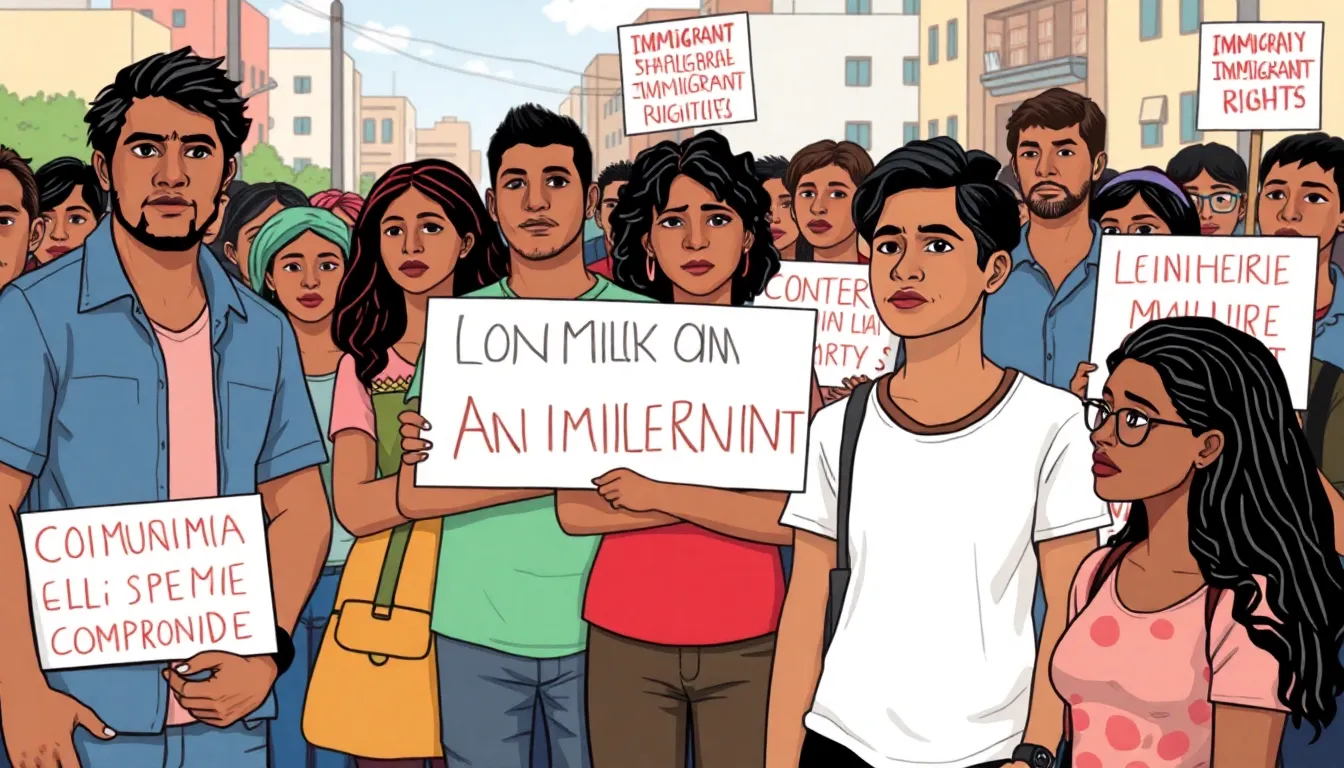In 2025, the world of immigration took a wild turn, and the numbers might just blow your mind. Picture this: thousands of people navigating the complex maze of deportation policies, all while trying to keep their sanity intact. It’s like a reality show, but with less drama and more paperwork.
As the year unfolded, the statistics surrounding deportations became a hot topic, sparking debates and discussions across the globe. Just how many people found themselves on the wrong side of the border? The numbers tell a story that’s both eye-opening and critical to understanding the current immigration landscape. Buckle up as we dive into the figures and explore the implications behind the statistics.
Table of Contents
ToggleOverview of Deportation Trends
Deportation trends in 2025 reflect significant policy shifts affecting many individuals. The ongoing debates surrounding these changes emphasize the complexity of immigration systems. Data from federal agencies indicates a marked increase in deportations compared to previous years.
Statistics reveal that over 500,000 individuals faced deportation proceedings in 2025 alone. Numerous factors contributed to this rise, including stricter enforcement policies and heightened scrutiny at borders. Geographic data shows that certain regions experienced higher deportation rates, particularly areas with dense immigrant populations.
Agency reports indicate that nearly 60% of deportations involved individuals from Central America. Additional insight from advocacy groups highlights the emotional toll on families separated during these processes. Reports suggest that many deported individuals had lived in the United States for over a decade, complicating their cases further.
Most deported individuals had no prior criminal records, challenging public perceptions about immigrants. Various advocacy organizations argue that the statistics illustrate a need for more humane immigration policies. Public opinion surveys show a growing divide regarding deportation practices, with some segments advocating for reform.
Policy changes rarely happen in isolation. Legislative debates continue to shape the conversation surrounding immigration and deportation as stakeholders seek solutions. The data from 2025 creates a poignant narrative about the ongoing struggle many face within the immigration landscape. Efforts to navigate current laws remain complex, necessitating clarity and compassion in approaching these matters.
Factors Influencing Deportation Rates

Various factors influence deportation rates in 2025, including policy changes and economic conditions impacting immigration processes.
Policy Changes
Stricter enforcement policies adopted in 2025 significantly raised deportation numbers. Changes in immigration laws heightened border scrutiny, contributing to the overwhelming statistics. Many individuals, particularly those from Central America, faced increased risks due to these shifts. Increased funding for immigration enforcement also played a critical role in the acceleration of deportation rates. Additionally, the prioritization of certain immigrant categories for deportation added complexity to the processes. Advocacy groups raised concerns about these policies, emphasizing the emotional impact on families and communities affected by deportations. They argue that such practices undermine the rights of long-term residents who contribute positively to society.
Economic Conditions
Economic conditions greatly affect deportation trends, particularly in regions with higher immigrant populations. Job availability, wage levels, and economic stability influence individuals’ decisions to immigrate and settle in new areas. During 2025, economic downturns prompted fears of job competition, leading to public calls for stricter immigration enforcement. Heightened insecurity often results in enforcement actions against undocumented individuals, further increasing deportation rates. Additionally, fluctuations in government funding for immigrant services can result in dramatic shifts in assistance and protections for these populations. Surveys indicate that economic anxiety among citizens correlates with rising support for deportation practices, reflecting broader societal tensions surrounding immigration.
Statistical Insights for 2025
In 2025, immigration and deportation policies led to significant demographic impacts. The statistics reveal noteworthy trends in deportations.
Demographic Breakdown
Among the over 500,000 individuals facing deportation, a large percentage hailed from Central America. Approximately 60% of deportees originated from countries such as Guatemala, Honduras, and El Salvador. These regions continue to show the most significant representation in deportation statistics. Many affected individuals resided in the U.S. for over ten years, illustrating their established lives and community ties. Additionally, data indicates that younger adults, particularly those aged 18 to 35, comprised a significant portion of deportees, highlighting concerns for future contributions to society.
Comparison to Previous Years
Comparing 2025 to earlier years shows a sharp increase in deportations. In 2024, deportation numbers were lower, with around 350,000 individuals deported. The jump of over 150,000 in 2025 reflects a more aggressive enforcement approach. Stricter policies and heightened border scrutiny contributed to the escalation. Such changes in immigration enforcement have led to growing divisions in public opinion about these practices. Legislative responses have yet to align with the trends, leaving many communities uncertain regarding their future.
Impact of Deportations
Deportations in 2025 have caused significant upheaval for families and communities. The emotional strain on families remains profound. Children, often left behind, face challenges adapting without their parents. Many families had built stable lives in the U.S. for over a decade. Their sudden separation can lead to psychological distress and instability. Communities also feel the impact. Local economies suffer with the loss of contributing members, which can also heighten fear and uncertainty among remaining residents. Advocacy groups highlight the urgent need for humane policies to mitigate these effects.
Migrant populations in 2025 endure unprecedented hardships due to increased deportation rates. Nearly 60% of deportees come from Central American countries, primarily Guatemala, Honduras, and El Salvador. Long-standing residents, unaware of their imminent risk, experience disruption in their daily lives. Many individuals faced deportation despite having no criminal records. The surge in enforcement has generated heightened scrutiny, complicating the lives of many immigrants in America. Public sentiment remains divided, with ongoing debates surrounding the treatment of migrants and the implications of these policies on broader immigration strategies.
The deportation landscape in 2025 has brought significant challenges for countless individuals and families. With over 500,000 facing removal proceedings the implications extend beyond statistics to deeply affect communities. The emotional toll on families left behind is immense as they navigate life without loved ones who’ve often been integral to their lives for years.
As discussions around immigration policies continue to evolve the need for humane solutions becomes increasingly urgent. The growing divide in public opinion highlights the complexity of these issues and the necessity for informed dialogue. Moving forward it’s essential to consider the human impact of deportation and strive for policies that prioritize compassion and understanding.


